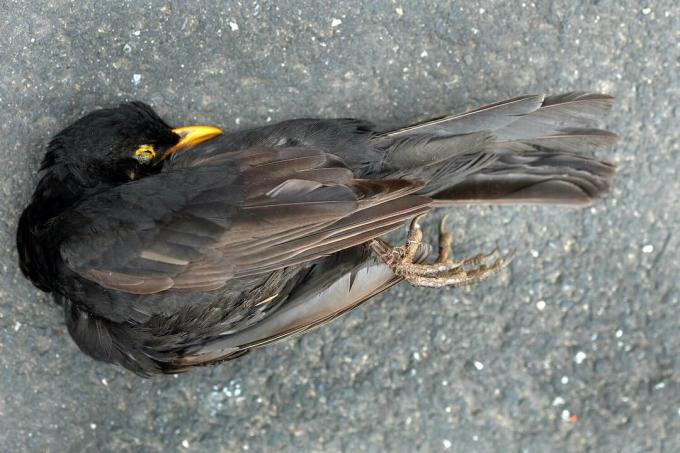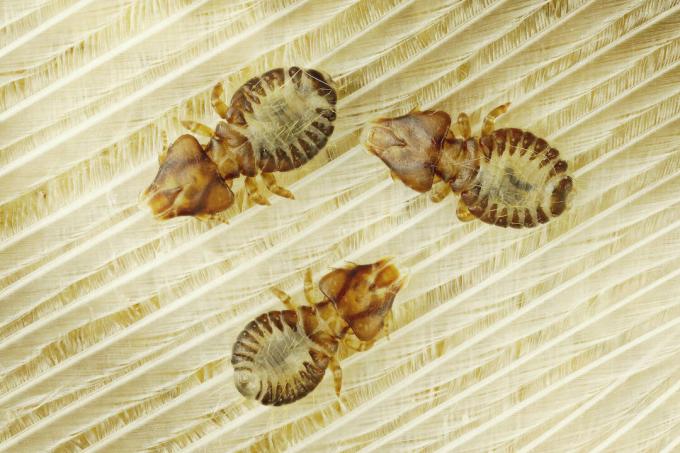How do you recognize a sick bird? What are the most common bird diseases and what should you do if you find sick birds in your garden? We answer these and other questions for you here.

Like us humans, birds are plagued by a wide variety of diseases and parasites. Some of them occur again and again and generally do not have a major impact on the population. Others spread suddenly and can kill thousands of wild birds - such as the Usutu virus, which caused massive blackbird deaths in 2011, or the bacterium Suttonella ornithocolawhich recently resulted in many dead blue tits. In our information article, we would like to introduce you to what the most common bird diseases are, how you can recognize them and what you can do to prevent the spread of bird diseases.
Avian Diseases: Which Are Most Common?
Avian diseases are very diverse and can cause a wide range of symptoms. It is therefore not always easy to recognize them at all, and even more difficult to make an accurate diagnosis. Nevertheless, we would like to introduce you to the most common diseases and their symptoms:
- That Usutu virus became known in 2011 because it led to massive blackbird deaths in a short period of time. In 2016 there was a second major wave of infections. The virus is transmitted by mosquitos and leads to death within a few days. Most affected animals show no symptoms, but some appear apathetic and disoriented.

- In 2020 the blue tit dying attracted a lot of attention. The pathogen that caused this was Suttonella ornithocola. This is a bacterium that caused severe pneumonia in the infected animals. The birds seemed unresponsive, were badly fluffed up, had beaks that were partially encrusted with yellowish tones and severe shortness of breath.
- Also the number of with Birdpox infested wild birds has been increasing for a number of years. The disease, which is also caused by a virus, occurs in a large number of bird species and is often observed in titmice in our country. Birdpox is easy to spot and is noticeable through growths the size of a hazelnut.
If you see sick or dead birds in your yard, the first thing to do is to thoroughly clean all feeding and watering points to prevent the disease from spreading. If the cases increase, you should stop feeding completely and report the findings immediately to NABU or the Wildvogelhilfe.

In addition, if you find a sick bird in the garden who appears weakened or apathetic, obvious ones Shows symptoms and you can get close to the animal, you should catch it and put it in a box with air holes set. Grasp the bird around the middle of its body so that it cannot injure itself by frantically flapping its wings. Gloves should definitely be worn to protect yourself from beaks and claws. Then put the box in a quiet, dark place and contact a veterinarian or a suitable foster home, such as one of the NABU wild bird care stations. Injured wild birds can also be reported in the Facebook group "Wild Bird Aid Emergency" - there you will be given competent first aid measures and foster care locations in your area.

Note: As a layperson, you shouldn't try to nurse the bird to health yourself. Also, do not give him any water or food, as the animals can choke. Wild bird care requires a lot of experience and knowledge and therefore usually goes wrong if it is not carried out by experts. The same goes if you have one, by the way injured bird have found.
The most common bird parasites
Parasites are also a problem for wild birds. Some can be seen with the naked eye, others are so small that you have to orientate yourself on the symptoms of the birds. The most common parasites in wild birds are presented below:
- Feather feathers are small plumage parasites that lay their eggs in the plumage of birds, where they feed on flakes of skin and components of feathers. As a result, the birds experience severe itching and scratch a lot. As a result, the birds usually look unkempt and sometimes have severe plumage damage. In addition, they often appear weakened because they suffer from lack of sleep due to the constant itching.

- the Louse fly In contrast to the small feathers, it is several millimeters in size and therefore easy to see with the naked eye. The parasite also settles in the plumage of birds, but bites into the skin and feeds on the animals' blood. Louse flies often specialize in certain species of birds. One of the most common representatives is the swallow louse fly, which for example House martins and Barn swallows infested.

- Trichomonads are unicellular organisms that spread through direct contact between birds and can attack many animals in a short time. The germ Trichomonas gallinae first led to mass extinction among greenfinches in summer 2009. The affected birds show frothy saliva, great thirst and a greatly reduced escape reaction.
- Mange mites grave mites attack the face, legs or cesspools of birds. You can recognize the parasites by the whitish, scabbed deposits that they cause in the affected regions. Here, too, the birds scratch each other and sometimes even pull their feathers out.
As with the diseases mentioned above, treating bird parasites is next to impossible for laypeople. Louse flies could still be picked up with tweezers and crushed like a tick, but once the bird is so weakened is that he lets himself be caught, he still needs professional help and therefore the same instructions apply as before.
Is the puffing up of birds a symptom of the disease?
A fluffed plumage is mainly used to protect against heat loss. The additional air that accumulates between the fluffed feathers has an insulating effect and makes it more difficult for the body to dissipate heat to the environment. In winter this is perfectly normal and not necessarily a cause for concern. In summer and in warm temperatures, however, fluffed plumage can very well be a sign of illness, because sick birds often have low temperatures and freeze. However, sick birds often show additional symptoms. They pull their heads close to their bodies, close their eyes slightly and often only flee late or not at all when approached.

How can you support birds against diseases and parasites?
Bathing in the sand to get clean sounds strange to us at first, but for birds it is an important part of plumage care. With a lot of shaking and wing flapping, parasites are removed in this way. A sand bath in the garden can therefore be of great use and is very easy to do yourself: you can just do one Fill a trivet or a bowl with sand and put it in a place that is as sunny as possible and safe from cats put up.

Note: Another bizarre practice of caring for plumage in birds is what is known as pinning. The birds brush living insects - mainly ants - through their plumage. The secretions released in this way, such as formic acid, act there against bacteria, fungi and other harmful organisms.
Other hygiene measures that you should carry out yourself are also regular cleaning of your Bird baths and feeding places. On hot days in particular, these can otherwise quickly develop into breeding grounds for parasites and pathogens. Since many birds come together there, numerous animals can become infected in a short time.
In addition to diseases and parasites, birds often have completely different problems in the garden. Domestic cats, for example, pose a real threat that is often underestimated. How yourself Cat and bird At the same time you can feel at home in the garden and what to watch out for as a cat owner and bird lover, in our special article.
